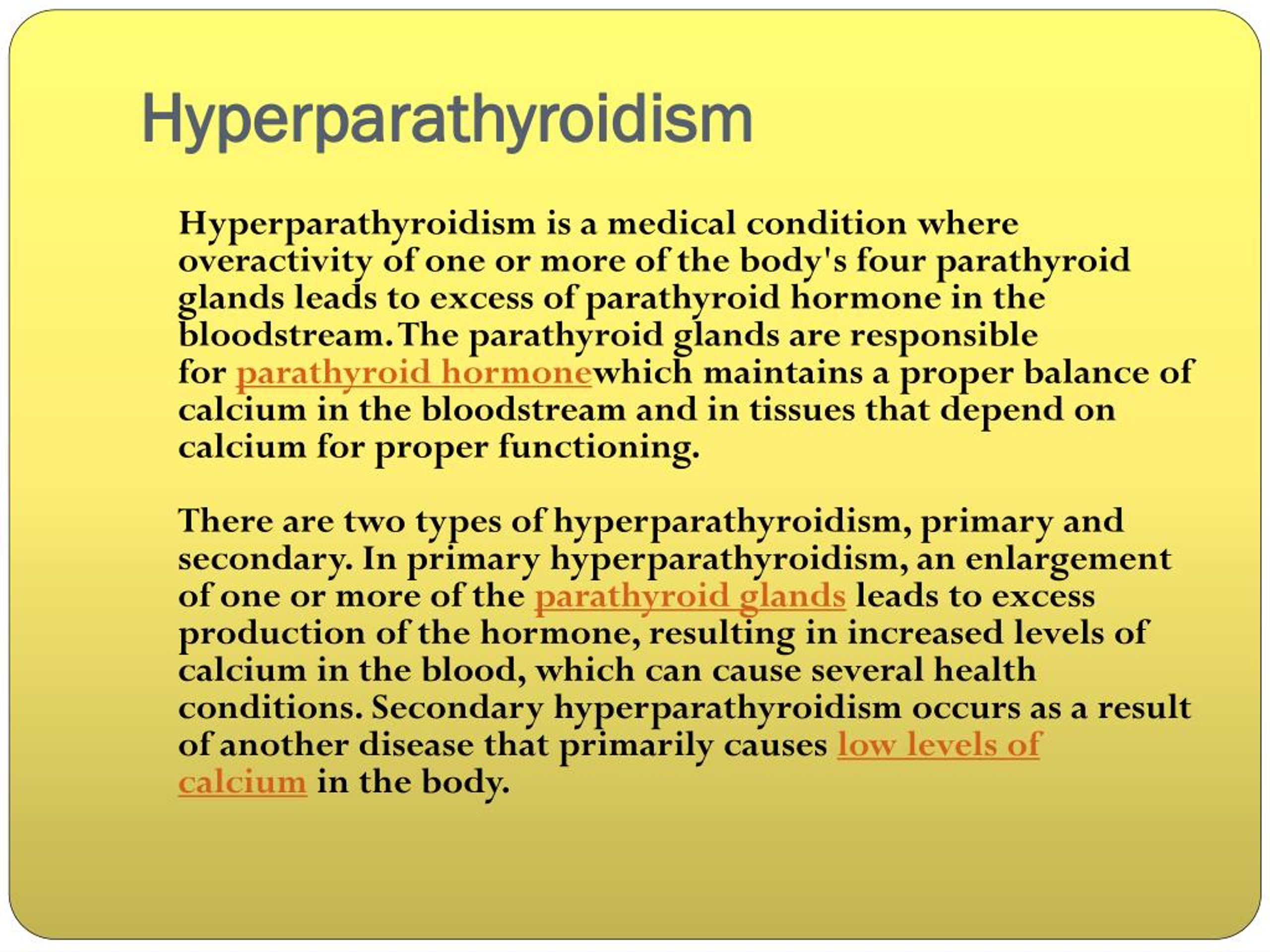

Imaging results were compared with surgical histopathology findings and the level of agreement was determined. Clinical profile and presentations were described and compared with international data. Retrospective chart review of PHPT Filipino patients who underwent parathyroidectomy at The Medical City from January 2004 to August 2018. Describe the clinical profile of post-parathyroidectomy PHPT patients at The Medical City (TMC) andĪssess localization rates and concordance of neck ultrasound (UTZ) and 99mTc-sestamibi scan (MIBI) with surgical histopathologic findings. Philippine studies on primary hyperparathyroidism (PHPT) and preoperative localization are scarce, making improvements on detection and recognition particularly difficult. Know how you can contact your healthcare provider if you have questions.Primary hyperparathyroidism, parathyroidectomy, parathyroid localization Abstract *Visual Abstracts prepared by Dr. If you have a follow-up appointment, write down the date, time, and purpose for that visit. Know what to expect if you do not take the medicine or have the test or procedure. Know why a test or procedure is recommended and what the results could mean. Also know what the side effects are.Īsk if your condition can be treated in other ways.

Know why a new medicine or treatment is prescribed, and how it will help you. Also write down any new instructions your provider gives you. Know the reason for your visit and what you want to happen.īefore your visit, write down questions you want answered.īring someone with you to help you ask questions and remember what your healthcare provider tells you.Īt the visit, write down the name of a new diagnosis, and any new medicines, treatments, or tests. Tips to help you get the most from a visit to your healthcare provider:

Treatment may include regular bone densitometry testing to reveal loss of bone tissue and to decide if surgery may be needed. It is sometimes found during a routine blood test as part of a physical exam. Symptoms include loss of appetite, increased thirst, frequent urination, lethargy and fatigue, muscle weakness, joint pain, constipation, and kidney pain Some known causes include benign tumors on the parathyroid glands or enlargement of the glands. This can lead to the loss of bone tissue. Primary hyperparathyroidism is a condition in which one or more of the parathyroid glands makes too much hormone. Key points about primary hyperparathyroidism Testing can also help decide if surgery may be needed. Treatment may include regular bone densitometry testing to reveal loss of bone tissue. Surgery to remove the affected gland may be needed. Your tolerance for specific medicines, procedures, or therapiesĮxpectations for the course of the disease Your age, overall health, and medical history Specific treatment for primary hyperparathyroidism will be decided by your healthcare provider based on: How is primary hyperparathyroidism treated? It is also used to help your healthcare provider to keep an eye on the condition. It is done to determine bone density and to reveal loss of bone tissue. This test is also called bone densitometry. To diagnose primary hyperparathyroidism, you may have a dual X-ray absorptiometry. Sometimes this problem is found during a routine blood test as part of a physical exam. The condition may not have any symptoms or complications. How is primary hyperparathyroidism diagnosed? Always talk with your healthcare provider for a diagnosis. The symptoms of primary hyperparathyroidism may look like other medical problems. Kidney pain (due to the presence of kidney stones) Symptoms of too much calcium in the blood may include: However, each person may experience symptoms differently. These are the most common symptoms of primary hyperparathyroidism. What are the symptoms of primary hyperparathyroidism? Some known causes include noncancerous (benign) tumors on the parathyroid glands, or enlargement of the glands. Both of these conditions are noncancerous (benign). When more than one gland becomes enlarged, it is called parathyroid hyperplasia. When there is a benign tumor in a parathyroid gland, it is called a parathyroid adenoma. Too much PTH causes too much calcium to be released from bone. When the hormone overacts, there is a rise in the blood calcium level. It also increases how much calcium is absorbed from food. The hormone also conserves calcium that would be given off by the kidneys. It does this by releasing calcium from bones. This condition is more common in women than in men.Ī job of PTH is to keep blood calcium levels from going too low. Primary hyperparathyroidism is a condition in which one or more of the parathyroid glands makes too much PTH. Your parathyroid glands produce parathyroid hormone (PTH).


 0 kommentar(er)
0 kommentar(er)
